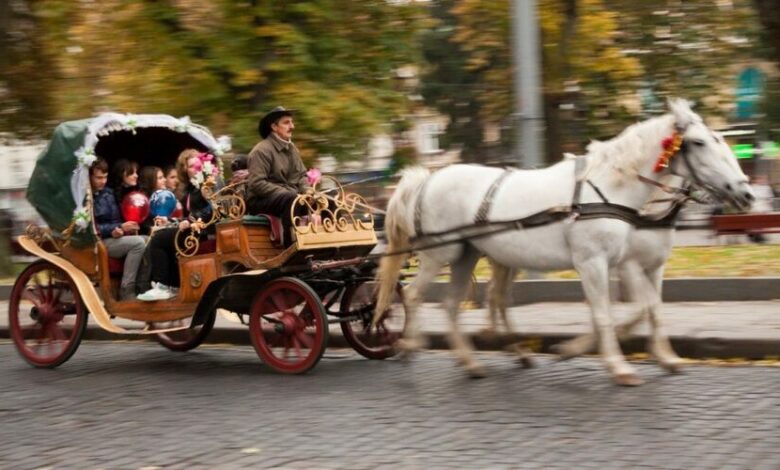
How the carriage business works in Europe: the working group met for the third time in Lviv
Today, 13 September, the Lviv City Council hosted the third meeting of the working group on regulating the operation of horse-drawn carriages in the city. This time, the meeting presented foreign experience in regulating the carriage business, in particular in European cities, and also spoke about the results of the working group’s visit to the Carriage House.
According to the State Service of Ukraine for Food Safety and Consumer Protection, 355 horses are registered in the Lviv hromada. Of these, 250 are owned by individuals and 85 by legal entities.
After the second meeting, the members of the working group and other interested persons toured the Carriage House. 16 people visited the stables, saw how the horses are cared for, had the opportunity to read the medical records and passports of each horse and studied the legal data of the company.
As it turned out, Valentyna Banas has been the owner of the Karetnyi Dvir trademark since 2012 and has been operating under this trademark as an individual entrepreneur. In addition, she has been working as a sole proprietor since 2005 and provides services for organising other types of recreation and entertainment.
“During the discussion, basic documents were presented, including confirmation of the status of the stud farm, which Karetnyi Dvir has. We inspected the places where the horses are kept, the arena and the areas where the horses are cared for. Not only our working group members, but also representatives of NGOs, including medical professionals, took part in the work. Two NGOs, Slava and Sobor, expressed their support for the Carriage House, appealing for the Carriage House’s participation in rehabilitation work and support for the Armed Forces of Ukraine,” said Vasyl Kmet, a member of the working group.
“We have studied the experience of using horse-drawn carriages in European cities. We explored not only Krakow and Vienna, but also Prague and Rome. And we saw different experiences. While Krakow and Vienna allow horse-drawn carriages to operate in the city centre, the experience of Prague and Rome shows that in certain years such activities were banned in the city centre, but not cancelled altogether, but moved to green areas. In each city, the work of horse-drawn carriages is clearly regulated by rules and requirements,” said Khrystyna Lebed, Head of the Tourism Department of the Lviv City Council.
The third meeting of the working group was attended by entrepreneurs who work with horse-drawn carriages in Lviv.
“We have set up a working group and I would like to appeal to all our colleagues who are here today and who are not with us, if you need to add someone else directly to the work of the working group, we are very open to this. We are also open to proposals for work either on the regulations or on topics. After all, our main task is to prepare and regulate the operation of horse-drawn carriages in Lviv,” said Andriy Moskalenko, chairman of the working group and first deputy mayor of Lviv.
At the next meeting of the working group, it is planned to develop rules to regulate the operation of horse-drawn carriages in the Lviv community.
On 27 August, Lviv banned the presence of horses and ponies, as well as any activity involving their use in the city centre, until a specially created working group develops the basic rules for the use of animals in Lviv. The decision was made by the executive committee of the city council after an incident on 26 August, when a horse carrying people in a carriage fell in the city centre, according to a video on social media. However, the horse’s owners later reported that the animal fell because it got tangled in the harness and was promptly freed, and not because of fatigue, as stated in the video description.

